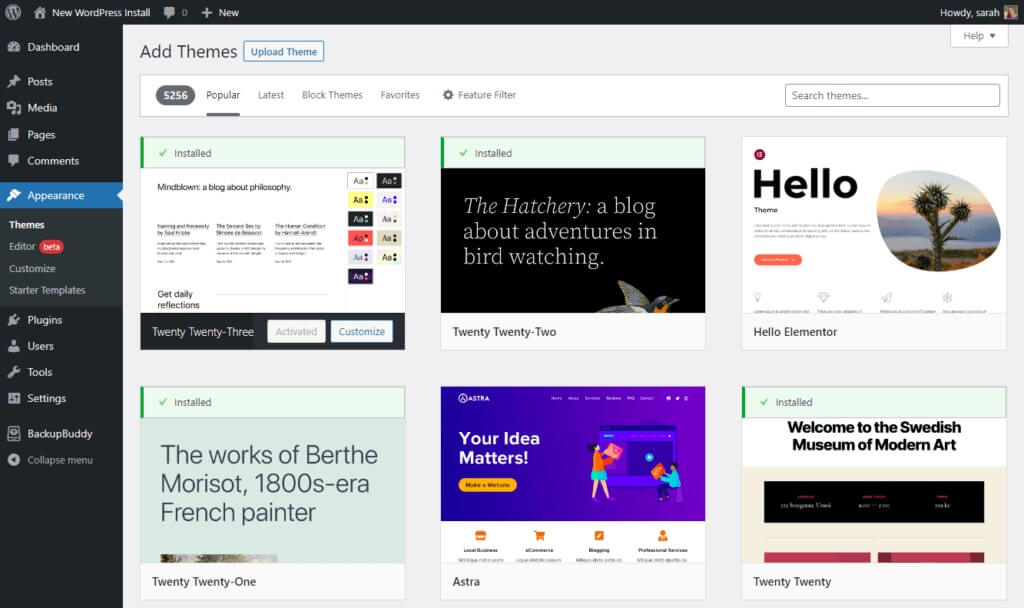How to Start a Sports Blog in 2023 (Step-by-Step Guide)
Category: Web Design

3 mins read
Blogging has become a popular way for sports enthusiasts to express their opinions, share their knowledge, and connect with like-minded people. A sports blog is an online platform where you can write about your favorite sports, teams, players, and events. It can be a great way to establish your authority in a niche, attract followers, and even make money. In this article, we'll discuss how to start a sports blog, step by step.
In this article:
1. Choose Your Niche
The first step in starting a sports blog is to choose your niche. Sports is a broad topic, and there are many subtopics within it. For example, you can write about a particular sport, such as basketball or football, or a specific league, such as the NBA or NFL. Alternatively, you can focus on a specific team, player, or event.
Choosing a niche is important because it will help you to establish your brand and target your audience. You want to write about something that you're passionate about and have some expertise in. It will be much easier to create content and engage with your readers if you're writing about something you love.
2. Choose Your Blogging Platform
Once you've chosen your niche, the next step is to choose your blogging platform. There are many options available, but the most popular one is WordPress. It's a free, open-source platform that's easy to use and has a lot of features. It also has a huge community of users, which means you can get help and support when you need it.
Other popular blogging platforms include Blogger, Tumblr, and Wix. Each of these platforms has its own strengths and weaknesses, so it's important to research them and choose the one that suits your needs best.

3. Choose Your Domain Name and Hosting
Your domain name is your website's address, and it's important to choose a name that's easy to remember and reflects your brand. You can buy a domain name from a domain registrar like GoDaddy or Namecheap. Make sure the domain name you choose is available and not already taken by someone else.
Once you have your domain name, you need to choose a hosting provider. Hosting is where your website files are stored and accessed by visitors. There are many hosting providers available, but some of the most popular ones are Bluehost, HostGator, and SiteGround. Choose a hosting provider that's reliable, affordable, and provides good customer support.

4. Set Up Your Website
Now that you have your domain name and hosting, it's time to set up your website. If you've chosen WordPress as your blogging platform, you can easily install it on your hosting account with just a few clicks. Most hosting providers offer a one-click installation option for WordPress.
Once WordPress is installed, you can choose a theme for your website. A theme is a pre-designed template that determines the look and feel of your website. WordPress has many free and paid themes to choose from, so you can find one that suits your niche and brand.
After you've chosen your theme, you can customize it by adding your logo, changing the colors, and adding widgets to your sidebar. You can also install plugins to add extra functionality to your website, such as social media sharing buttons, contact forms, and analytics.
5. Create Content
Now that your website is set up, it's time to start creating content. Content is the most important part of your blog, and it's what will attract visitors and keep them coming back. You should aim to create high-quality, engaging content that's relevant to your niche and audience.
Start by creating a content plan or editorial calendar. Your content plan should include the topics you want to write about, the keywords you want to target, and a publishing schedule. This will help you to stay organized and ensure that you're creating content on a regular basis.
When creating your content, aim to provide value to your readers. This can include news updates, analysis, opinion pieces, interviews, and more. You should also try to incorporate multimedia elements into your posts, such as images, videos, and infographics.
It's also important to optimize your content for search engines. This means using relevant keywords in your post titles, headings, and content. You should also use meta descriptions and alt tags for your images.
6. Promote Your Blog
Once you've created some content, it's time to start promoting your blog. This is important because it will help you to attract visitors and grow your audience. There are many ways to promote your blog, including:
Social media: Share your posts on social media platforms like Twitter, Facebook, and Instagram. You can also join relevant groups and communities to connect with like-minded people.
Email marketing: Build an email list and send regular newsletters to your subscribers. This can help to keep them engaged with your content and promote your blog.
Guest posting: Write guest posts for other blogs in your niche. This can help to attract new readers and build your authority in the industry.
Outreach: Reach out to influencers and other bloggers in your niche. You can ask them to share your content or collaborate on a project.
7. Monetize Your Blog
Finally, you can monetize your blog once you have a substantial following. There are many ways to make money from your blog, including:

- Advertising: You can display ads on your website and earn money from clicks or impressions.
- Affiliate marketing: Promote products or services on your blog and earn a commission for each sale.
- Sponsored posts: Write sponsored posts for brands and earn money in exchange.
- Product sales: Create and sell your own products, such as e-books, courses, or merchandise.
- Donations: Ask your readers for donations or set up a Patreon account.
Conclusion
Starting a sports blog can be a fun and rewarding experience. By following the steps outlined in this article, you can create a successful blog that attracts visitors, builds your authority, and even makes money. Remember to choose a niche, choose a platform, create content, promote your blog, and monetize it. With dedication and hard work, you can create a sports blog that you're proud of.




















